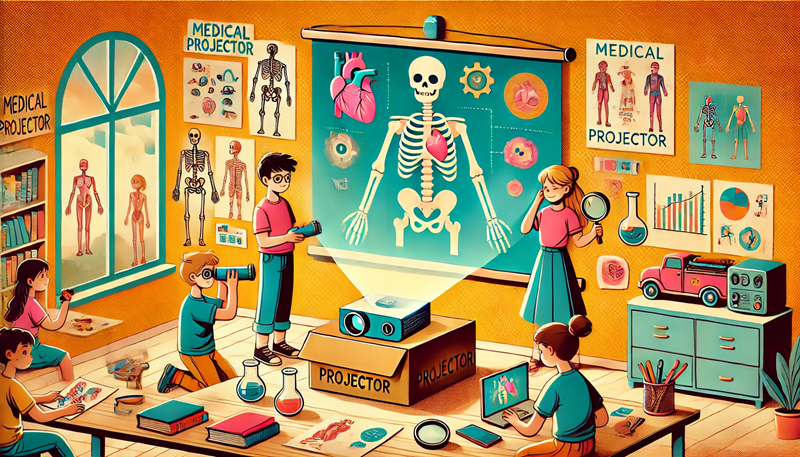Creating a DIY medical projector is a fantastic way for students to explore the world of healthcare technology while working on a fun and creative school project. Using materials commonly found at home, students can learn how medical projectors enhance healthcare visualization and replicate a simplified version to demonstrate their applications.
What is a Medical Projector?
Medical projectors are advanced visualization tools used in healthcare to display medical images, such as X-rays and anatomy diagrams, on a large scale. They improve diagnostic accuracy, surgical precision, and medical education. This DIY project offers a glimpse into how such technology works and its applications in healthcare.
Objective of the Project
The goal is to build a simple DIY medical projector using household items to demonstrate how medical imaging can be visualized for educational purposes.
Materials Needed for the DIY Medical Projector
Gather the following materials, most of which are readily available at home:
- Cardboard box (e.g., a shoebox).
- Magnifying glass (serves as the projector lens).
- Smartphone or tablet (to display images).
- Tape or glue (to secure components).
- Scissors or a box cutter (for cutting the cardboard).
- White paper or a light-colored wall (as the projection surface).
- Printable anatomy diagrams (e.g., skeletal system, heart structure).
Step-by-Step Instructions
1. Prepare the Cardboard Box
- Select a sturdy cardboard box large enough to accommodate your smartphone or tablet.
- Cut a circular hole on one side of the box, slightly smaller than the magnifying glass. This will serve as the lens slot.
2. Attach the Magnifying Glass
- Place the magnifying glass over the hole and secure it firmly using tape or glue. Ensure that it is properly aligned and centered.
3. Set Up the Smartphone
- Inside the box, create a stable stand using folded cardboard to hold the smartphone securely in place.
- Invert the smartphone screen by turning on the screen rotation lock and flipping the device upside down. This corrects the image orientation when projected.
4. Darken the Room
- Close the box to block out light. Make sure the room is dark to maximize the clarity of the projection.
5. Project the Image
- Select a medical image, such as an anatomy diagram, and display it on the smartphone.
- Place the phone inside the box, facing the magnifying glass. Adjust the distance between the phone and the lens until the image is clearly projected onto the wall or paper.
Use Case: Medical Visualization for Education
The DIY projector can be used for a variety of educational purposes, such as:
- Learning Human Anatomy: Project diagrams of the skeletal system, heart, or lungs.
- Simulating X-rays: Use black-and-white images of bones to mimic medical imaging.
- Health Education: Visualize the effects of exercise or diet on organs using labeled diagrams.
What Students Will Learn
This project offers valuable insights into the use of visualization in healthcare:
- Understanding Medical Projectors: Learn how visualization aids in diagnostics, surgeries, and education.
- Creative Problem-Solving: Explore ways to replicate technology using simple materials.
- Hands-On Learning: Gain practical experience in building a working model.
Presentation Ideas for Students
- Live Demonstration: Showcase the DIY projector by projecting anatomy diagrams and explaining their significance.
- Poster or Slide Presentation: Create a visual presentation on the role of medical projectors in healthcare.
- Discussion: Highlight how real medical projectors improve patient care and medical training.
Building a DIY medical projector is an engaging and educational project that introduces students to the fascinating world of healthcare visualization. By exploring the basics of medical projectors, students not only develop a deeper understanding of technology in medicine but also cultivate creativity and problem-solving skills.
Encourage students to take this project to the next level by experimenting with different images or improving the setup for better clarity. Let’s inspire the next generation of innovators to explore the possibilities of healthcare technology!
